Irish Eggs Benedict with corned beef, sauerkraut and eggs isn't just any brunch dish; it's a celebration on a plate, making brunch for two a little more special. Imagine tender slices of corned beef, nestled atop toasted English muffins, with a tangy sauerkraut surprise waiting beneath perfectly poached eggs.

But wait, it gets better! In addition, we're shaking things up adding a dash of A1 Steak Sauce to our hollandaise sauce that will have your taste buds dancing a jig.
Pam's Best Tips
If you have left over corned beef from your St Patrick’s day feast, let’s swap out the Canadian bacon for corned beef and add a bit of sauerkraut. Top with a perfectly poached egg, then smother with a hollandaise sauce flavored with a dash of A1 steak sauce!

Eggs Benedict is really two recipes in one: perfectly poached eggs and a hollandaise sauce.
Poaching eggs can be intimidating – trying to achieve silky yet firm whites with a soft runny center is easier than you think. All you need is a saucepan, boiling water, vinegar, salt and about 5 minutes.
What about the hollandaise sauce? First, I have absolutely no problem using packaged hollandaise sauce mix where you add milk and butter. Once you make this foolproof hollandaise you may never go back to the stuff in a packet again.
Read on for step-by-step instructions on how to perfectly poach an egg and to make a fool proof hollandaise sauce. If you like Eggs Benedict be sure to try my Smoked Salmon Eggs Benedict.
Jump to:
- Pam's Best Tips
- What is Eggs Benedict?
- Irish Eggs Benedict Ingredients
- How to make A1 hollandaise sauce for two
- Make ahead and reheating hollandaise sauce
- How to perfectly poach eggs for two
- Assembling Irish Eggs Benedict
- Common questions about this recipe
- Related
- Eggs Benedict Sides
- Irish Eggs Benedict Recipe
What is Eggs Benedict?
Popularized in New York City, eggs Benedict is a breakfast or brunch dish, consisting of two halves of a toasted English muffin, each topped with Canadian bacon, a poached egg, and hollandaise sauce. While Irish eggs B=benedict swaps out the Canadian bacon for corned beef, has a bit of sauerkraut tucked under a perfectly poached egg then topped with hollandaise sauce flavored with a dash of A1 steak sauce!
This Irish Eggs Benedict recipe was Inspired by a cozy little diner tucked away in Logan, Utah. Herm’s Inn isn’t the easiest place to find, but we sought it out on our journey from Salt Lake City, Utah to Jackson, Wyoming.

In the early 1900’s, Herm’s Inn was on the only route from town to Logan Canyon. The road passed by it on the way to the Bear Lake and Yellowstone HWY 89 route. It was the last place to fill up on gasoline and get a quick lunch before heading through the canyon. (photo collage from Herm’s Inn)
Which means this is also the first place to get gas and a bite once you drove the long distance through the canyon.
The weekend breakfast special featured this Irish eggs Benedict - It’s a twist on the classic eggs Benedict, infused with Irish charm and flavor, just in time for Saint Patrick's Day or any day you're craving a bit of delicious brunch innovation.

Irish Eggs Benedict Ingredients
Here is what you need to make this celebration eggs benedict just in time for Saint Patrick's day or really any day you're craving a twist on the traditional eggs and bacon.


- English muffins – traditionally eggs Benedict is made with toasted muffins. Bays English Muffins are a favorite in our household because of their fresh, buttery flavor and firm texture. Once toasted, you will find the right amount of crisp edges with a soft and chewy interior. You can easily substitute bagels for English muffins
.Bays can be found in the dairy case of your local grocery store. - Eggs
- Vinegar
- Salt
- Corned Beef – Why Is It called corned beef? It's actually pretty simple — corned beef got its name from the dry curing process used to preserve the meat. A slice of beef was covered in “corns” (large, coarse pellets of salt), which would draw out the moisture and prevent the growth of bacteria. If you your deli does not have any corned beef, use pastrami, they taste very similar and will work in a pinch.
- Sauerkraut (optional)– I love adding sauerkraut, but you can easily leave it out.
- A1 Hollandaise sauce – for this recipe you can use a hollandaise sauce packet and add a dash of A1 for seasoning or try this fool proof Hollandaise that will be sure to convince you never to use a sauce mix again!
Note: ingredient measurements are found in the recipe card below.
Sauerkraut shopping tips
When shopping for Sauerkraut keep in mind that it's “alive” and will continue to ferment past its peak stage unless kept at a stable temperature. For this reason, the best sauerkraut is typically sold in the refrigerator section of grocery stores or at farmers markets.
Does the ingredient list start with cabbage, include some other vegetables and spices for yummy flavor and list salt? Perfect! Avoid a brand that adds vinegar or sugar.
How to make A1 hollandaise sauce for two
Cooking for two? This foolproof hollandaise sauce recipe whisks butter and egg yolks together using indirect heat giving you more control as you whisk the eggs, allowing them to thicken not curdle.

Use indirect heat (a double boiler set up). Whisk the butter and egg yolks in a heat-resistant glass or ceramic bowl set over a saucepan filled with about a ½ inch of simmering water. Mixing the yolks with butter creates a strong emulsion that is less likely to break while cooking.

Add boiling water. While whisking the yolk mixture, slowly add boiling water. Adding a lot of hot water makes the sauce less likely to “break” or separate, curdling can happen if the yolk mixture is too dry. The result is a sauce that can be chilled and reheated!
Pro tip: Use the right bowl. A heat-resistant glass or ceramic bowl is thicker and slower to heat. A stainless-steel bowl will get hot too quickly making it almost impossible to keep the yolks from curdling.
Heat sauce until the instant read thermometer reads 160 degrees. Remove the saucepan from the heat, keeping the bowl over the water bath and whisk in A1 steak sauce and a pinch of salt. Make sure to taste and add more A1 if you want more of a taste punch in your hollandaise.
Pro Tip: Whisk wisely. I have found that whisking by hand versus a blender or handheld mixer gives you the best feel for when the sauce starts to thicken. A side-to-side motion instead of stirring or beating allows the best aggressive whisking.
Make ahead and reheating hollandaise sauce
The technique of whisking together butter and eggs creates a stronger emulsion resulting in a sauce that is more stable and less likely to break, holding nicely for up to an hour. It can also be refrigerated for up to three days and then heated in the microwave without breaking.
The trick to reheating hollandaise sauce is to use the microwave and warm it gradually at 50 percent power, stirring it every 10 seconds until warm.
How to perfectly poach eggs for two
Poaching eggs in a shallow skillet rather than a saucepan makes it easier to spoon them out of the water. Putting the eggs into 2 teacups and gently pouring the eggs into the boiling water is a handy trick to get all the eggs in the pan at once, cooking at the same rate. Finish poaching the eggs off the heat to keep egg whites intact with a soft and runny yolk.

Season the water. First, fill an 8- inch skillet with water up to the rim. Add vinegar and salt bringing the water to a rolling boil. Adding vinegar will help the egg whites set up with fewer wispy or floating white pieces in the skillet.

Add the eggs. The easiest way to do this is to crack two eggs into each teacup. Gently, and at the same, time pour the eggs into the skillet. Allowing the eggs to enter the water at the same time will result in equal cooking time.

Remove from Heat and Poach. Cover the skillet, remove it from the heat and let the eggs gently steam until the whites are set but the yolks are still slightly runny.
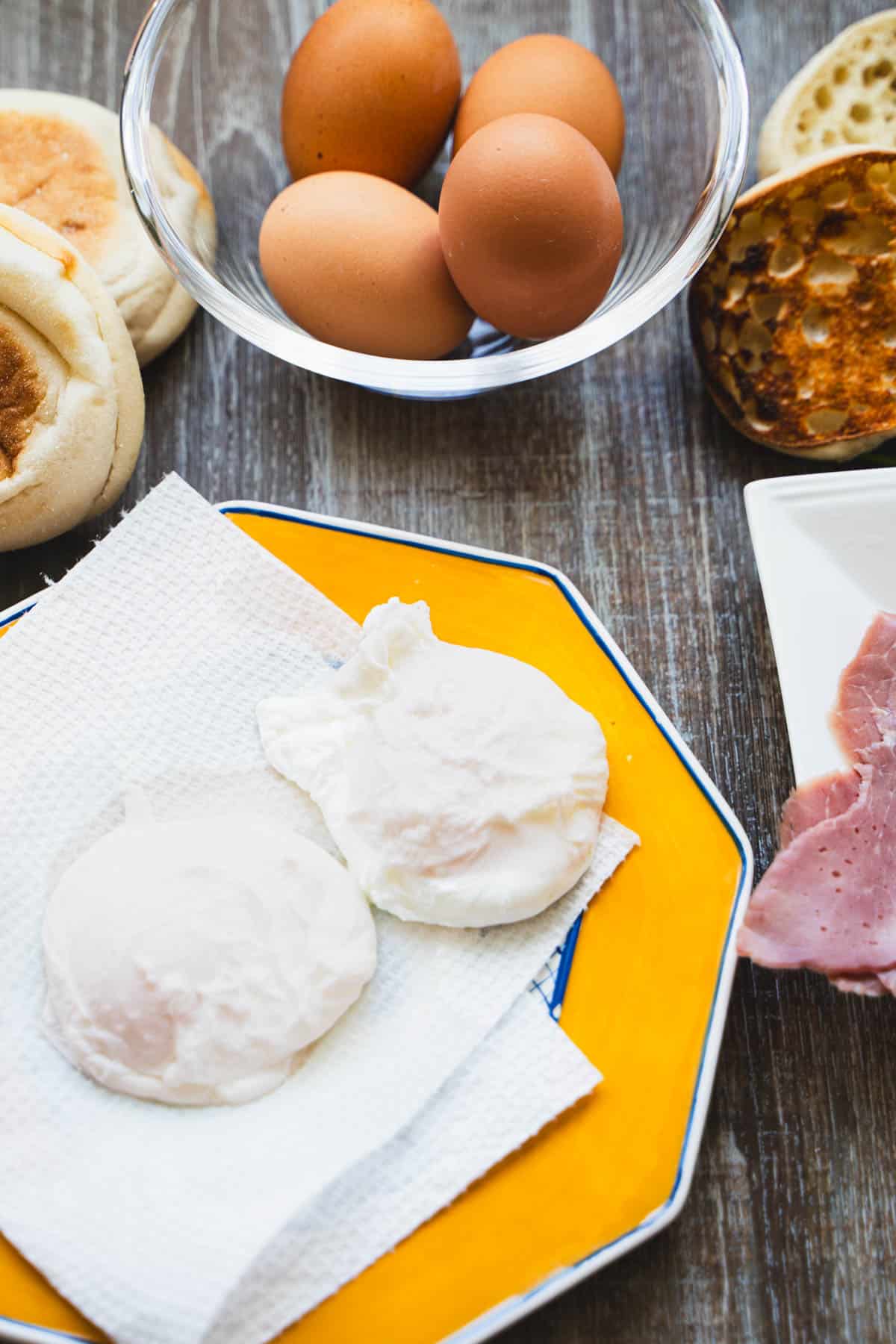
Drain on paper-towels. This is really important, use a slotted spoon and transfer the eggs to a paper-lined plate. The paper towel will soak up any excess moisture which prevents your muffins from getting soggy.
Assembling Irish Eggs Benedict
Once the eggs are poached and the hollandaise sauce is made it is time to start assembling.
Broil Muffins. Broil the English muffins, split side up, on a baking sheet until they are golden brown. Of course, if you are cooking for two and have a 4-slice toaster you can simply toast the English muffins.

Layer on the toppings. Start by layering half of the corned beef on each muffin half, followed by the sauerkraut. Top with the remaining corned beef and broil until hot and beginning to brown. This will take the chill off the corned beef and sauerkraut.

Place a poached egg on top of the corned beef and ladle on the warm hollandaise sauce. Garnish with chives.
Love this recipe? Please leave a star rating and review in the comments below! And don't forget to subscribe to Our Table 4 2 for even more cooking for two recipes and tips.
Common questions about this recipe
You've got questions... I've got answers! If you have a question about this recipe that isn't answered below, feel free to leave it in the comments, and I'll jump in there to help you out.
Yes. Make sure to use a large heat resistant glass or ceramic bowl. Tripling the recipe could get tricky and you will need to adjust your cooking times.
Yes. This recipe whisks together butter and yolks and then adds boiling water making it more stable and less likely to separate than other recipes. This sauce will hold together for about one hour. It stores nicely in the refrigerator for up to three days. Reheat in the microwave on 50% power, stirring every 10 seconds until warm.
Eggs Benedict, eggs florentine, and eggs royale all start with a toasted English muffin, have a poached egg, and are smothered with a warm, lemony hollandaise sauce. Eggs Benedict will have a slice of Canadian bacon, while eggs royale will swap out the bacon for smoked salmon (salmon lox).
Related
Looking for other brunch recipes for two? Try these:
Eggs Benedict Sides
When serving eggs Benedict, I opt for a simple green salad tossed with our favorite shallot vinaigrette or this honey citrus orange champagne vinaigrette.
Here are a few of my other favorite sides when serving Irish Eggs Benedict:
- Simple green salad – tossed in a shallot vinaigrette or a honey citrus vinaigrette
- Hash browns, roasted potatoes or tator tots – keep it simple and head to the freezer aisle to buy a bag of your favorite potato preparation.
- Fresh fruit
Irish Eggs Benedict Recipe
Save This Recipe To Your Recipe Box
You can access your saved recipes on this device and generate a shopping list for recipes in your collections.
Ingredients
For Eggs Benedict with smoked salmon
- 2 English muffins cut in half, toasted, and still warm (or bagels)
- 2 ounces sauerkraut (about
2 Tablespoons per english muffin half) - 3 ounces corned beef deli slices or last nights' corned beef, shredded
- 1 Tablespoon vinegar
- ½ teaspoon salt
- 4 large eggs
- Hollandaise sauce purchased sauce packet – make only half the package. Or make your own hollandaise sauce included in this recipe card.
For foolproof hollandaise sauce:
- 4 Tablespoons unsalted butter cut into 4 pieces and softened
- 2 large egg yolks
- 2 Tablespoons + 1 teaspoon boiling water
- 2 teaspoons A1 Sauce , plus more to taste
- Salt
- fresh chives , chopped (optional)
Instructions
- First, make the Hollandaise either following the packet instructions or make your own following the instructions below. Cooking for two? Use only half the sauce mix package, storing remaining contents in an airtight container for a future use.
Make foolproof hollandaise sauce:
- Place softened butter pieces and egg yolks in medium heat-¬resistant glass or ceramic bowl. Bring ½-inch water to simmer in medium saucepan. Set the bowl over the simmering water making sure that water does not touch bottom of bowl. Whisk the butter and egg yolks together using a side – to-side motion instead of stirring or beating. Keep whisking until the yolk mixture comes together and is smooth, about 1 minute.
- While whisking the yolk mixture slowly add boiling water. Adding a lot of hot water makes the sauce less likely to “break” or separate. Heat sauce until the instant read thermometer reads 160 degrees, about 6-7 minutes. Remove the sauce pan from the heat, keeping the bowl over the water bath and whisk in A1 sauce and salt. Taste and adjust seasonings by adding more A1 Sauce. Cover to keep warm.
Poach the eggs.
- Fill an 8- inch skillet with water up to the rim. Add vinegar and salt bringing the water to a rolling broil. Adding vinegar will help the egg whites set up with fewer wispy or floating white pieces in the skillet.
- Crack two eggs into each teacup. Gently and at the same time pour the eggs into the skillet. Cover the skillet, remove from heat and let eggs gently steam until the whites are set but the yolks are still slightly runny. About 3 to 4 minutes. If you desire firmer eggs then simmer for an additional 1-2 minutes.
- Meanwhile, Adjust oven rack 6 inches from broiler element and heat broiler. Arrange English muffins split side up on baking sheet and broil until golden brown, 2 to 4 minutes.
- Now, using a slotted spoon, transfer the eggs from the poaching water to a paper-lined plate. The paper towel will soak up any excess moisture and prevent your muffins from becoming soggy.
Assemble.
- Evenly distribute half of the corned beef on each muffin half. Place 2 tablespoons sauerkraut on top of corned beef. Now layer the remaining corned beef on top of the sauerkraut and broil until hot and beginning to brown, about 1 minute. Remove sheet from oven and cover loosely with aluminum foil.Ladle 1 – 2 Tablespoons of the hollandaise sauce over each egg. Garnish with chives. Pass remaining hollandaise sauce.
Video
Notes
Your Notes, Tips and Tricks
Nutrition
Nutritional information is only an estimate. The accuracy of the nutritional information for any recipe on this site is not guaranteed.

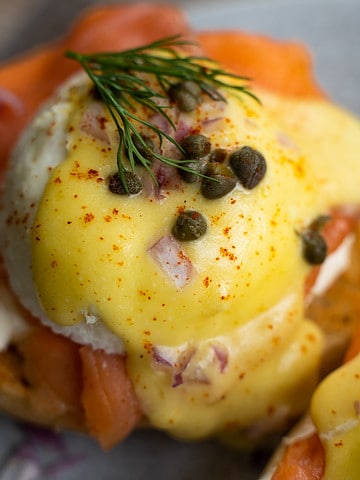
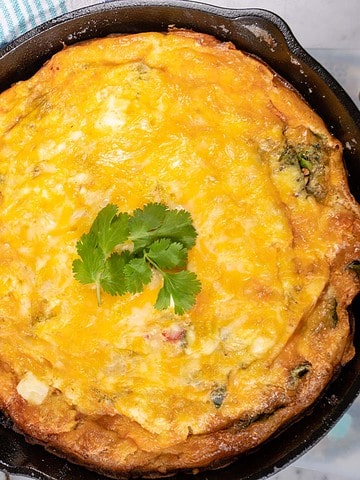

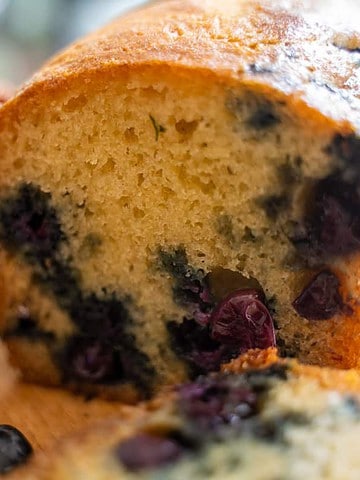
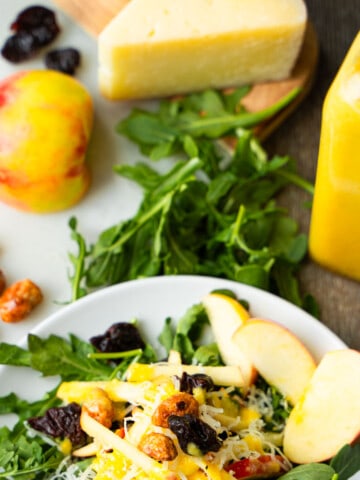
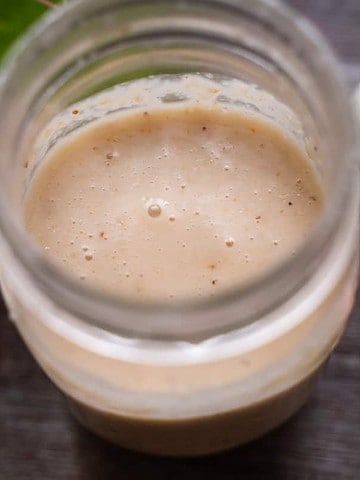
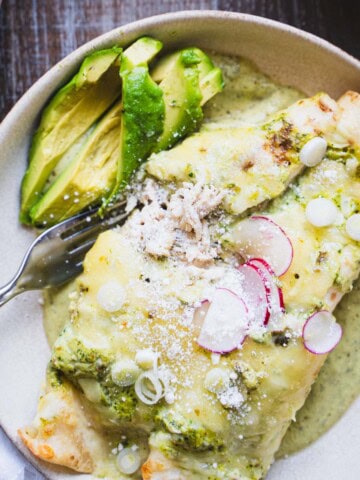

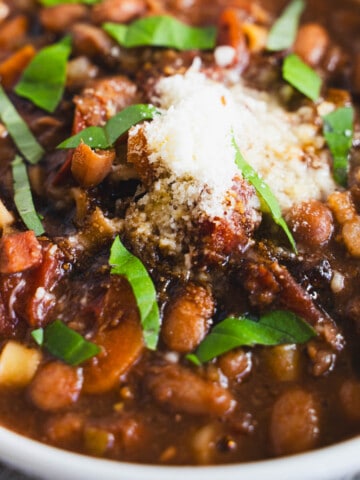
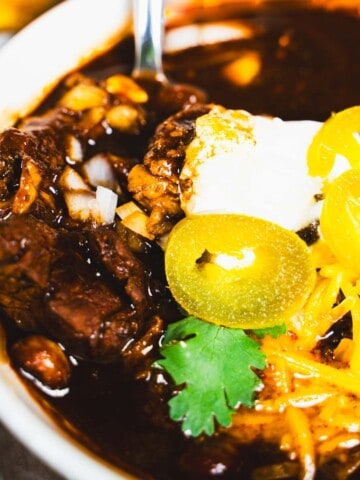
Leave a Reply